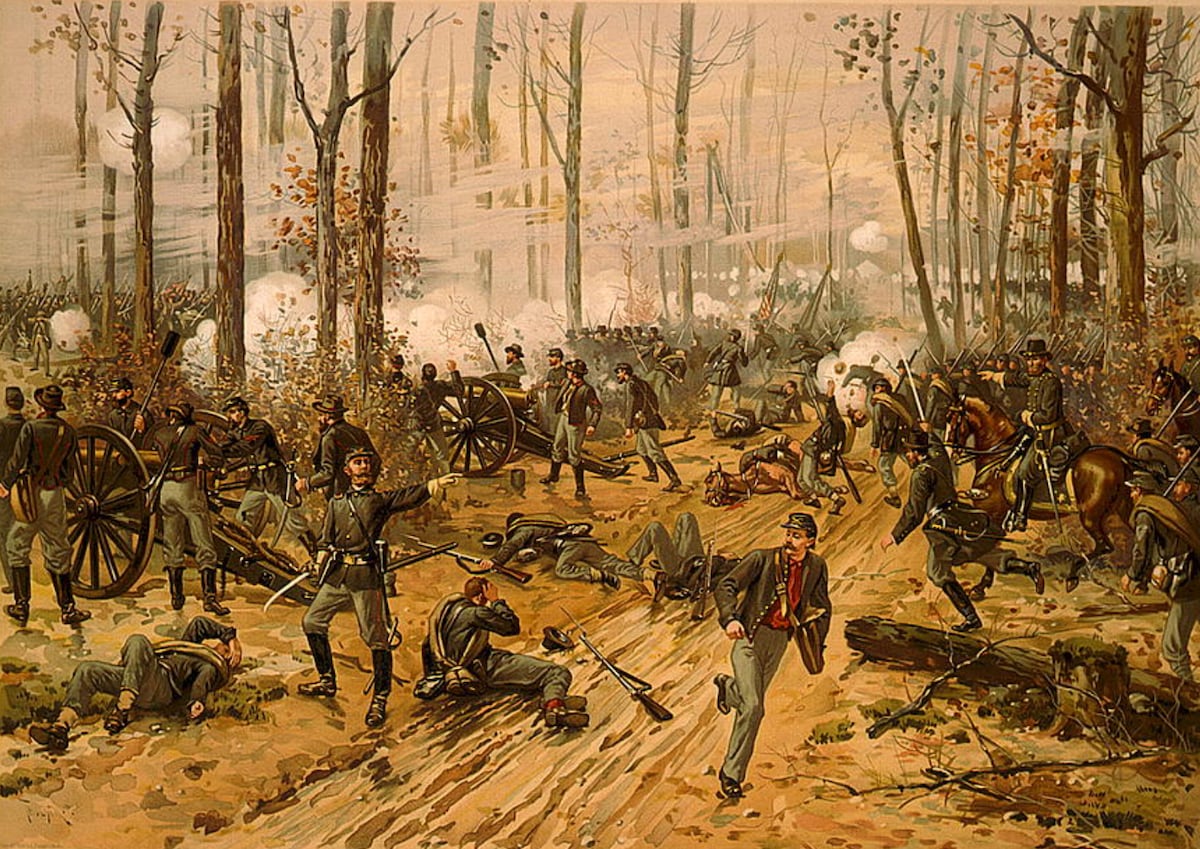Wounded soldiers glowing with a greenish-blue.
Those soldiers inexplicably recovering more quickly than others.
A Halloween tale for this time of year?
No, it was a true episode from the Civil War – the Battle of Shiloh – and one that was only explained many years later, in 2001, in part by two high school students in a Maryland suburb outside Washington.
The story begins on April 6, 1862.
Dawn was beginning to break near a small Methodist meeting house in Hardin County, in southwestern Tennessee, and the Union army was not expecting much trouble.
The Union Army of the Tennessee, had routed Confederate forces at Forts Donelson and Henry a few weeks before and had hunkered down in Hardin County.
The Union forces, so confident in their security, had constructed no defensive works around their camp. Maj. Gen. Ulysses S. Grant, the commander, was 20 miles away, meeting with Maj. Gen. Don Carlos Buell, head of the Army of the Ohio. Grant had not even bothered to leave an officer in temporary command during his absence, according to historian Christopher Allen.
Soon, however, the Union men were roused from their slumber by nearly 45,000 Confederate troops, organized into four corps of the Army of the Mississippi, under the command of Gen. Albert Sidney Johnston.
On what had been a peaceful Sunday morning soon turned into one of the bloodiest clashes of the of the Civil War.
There were an estimated 23,746 casualties over the two-day battle. On the Union side, 1,754 men were killed and 8,408 wounded. The Confederates suffered similar losses, with 1,728 killed and 8,012 wounded.
With field medicine still primitive during the early days of the war and germ theory still a relatively new concept, hundreds of wounded men were left to wait for aid in the rain on a muddy battlefield.
However, as day turned into night, shockingly, some of the surviving wounded began to glow a greenish-blue hue. Moreover, doctors and medical personnel later reported that those with glowing wounds had lower infection rates and healed much more quickly than those without them.
The other-worldly phenomenon was quickly dubbed the “Angel’s Glow” by soldiers for its seemingly healing properties.
It would take 139 years, however, to apparently unravel the mystery surrounding the glow.
In 2001, high school students Bill Martin and Jonathan Curtis, at Bowie High School in Bowie, Maryland, worked with Martin’s mother, Agricultural Research Service microbiologist Phyllis Martin, to root out its source. According to the Agriculture Department, she had “previously studied the bacterium, Photorhabdus luminescens, as a potential biocontrol agent and knew that this insect pathogen created a glowing effect.”
The students found that the Photorhabdus strains produced antibiotics that inhibited the growth of other bacteria that would have caused infections in open wounds, thus aiding in the soldiers’ healing.
It was known that the glowing bacteria live in the guts of nematodes, small parasitic worms, Curtis said in a 2001 interview with HealthDay, “and we found that these nematodes are attracted to small insects that would have been in the guts or clothing of the soldiers, and [the worms] would have excreted glowing bacteria.”
The excreted glowing bacteria from the parasitic nematode released chemicals that ate away at serious bacterial infections such as gangrene. The cold and wet conditions after the battle likely made it the perfect hosting conditions for the worm and bacteria — and likely helped the soldiers live through the night.
Melissa A. Winn, director of marketing and communications at the National Museum of Civil War Medicine in Frederick, Maryland, told Military Times, “Angel’s Glow was a true phenomenon and one of those stories about Civil War medicine and soldiers that they hear questions about often, especially around Halloween.”
“What’s exciting about the story for us,” Winn said, “is the modern interest in determining ‘why.’ It’s genuinely part of our mission to use artifacts, storytelling and the historic lessons derived from that era to educate the public and define the impact on today’s society. We continue to learn from and benefit from Civil War medicine and this story highlights how curiosity about this unique phenomenon has impacted medical study in the 21st Century.”
Claire Barrett is the Strategic Operations Editor for Sightline Media and a World War II researcher with an unparalleled affinity for Sir Winston Churchill and Michigan football.
Read the full article here








